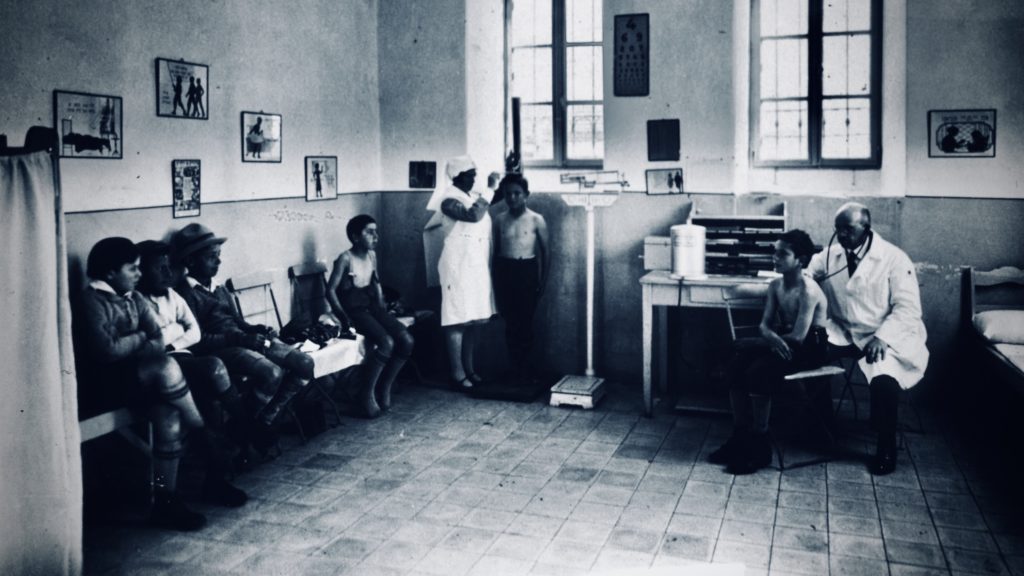What is a Doctor’s Role?
This sounds like a crazy question. But it really isn’t. What does a doctor do? What’s my job with my patients. What is a doctor’s role?

Some of what I do is transactional. Simple stuff with clear end-points. Some of it involves critical conversations and deeper kinds of thinking, planning, and translating.
Breaking my job down into different roles
I got to thinking about what I do on a daily basis. In my work I …
- Find. I look for and find things. This is the discovery of problems during physical exam and endoscopy. Usually these are things the patient didn’t know about when they came to see me. They’re discoveries that solve a child’s problem.
- Do. Transactions. These are medicine’s well-defined encounters with clear endpoints. Changing a gastrostomy tube, removing a polyp, pulling a button battery from a toddler’s esophagus, or stretching a stricture. Increasingly encounters of all kinds in healthcare are being shaped as transactions when they probably shouldn’t be (and why we won’t see Genius Bars in healthcare anytime soon).
- Identify patterns. So much of clinical medicine is the identification of patterns. It’s the ‘seeing’ part of medicine. I look for things I’ve seen 10 thousand times. More importantly I look for the thing that doesn’t look like the others.
- Connect. The patterns come from connection. This is the job of taking bits and pieces of information and putting them together. This usually involves taking elements of a patient’s story, applying wisdom and experience and then offering a really educated guess about what’s happening.
- Translate. I can find connect things or identify concerning patterns but if it doesn’t get across to my parents on their level, it’s worthless. Often I take something that I find (or they find) and translate what it means, or why it may be meaningless. Why it’s relevant, irrelevant or just plain funny. This is the reassurance piece. The translation piece of what we do is growing as patients do more on their own and as diagnostics become more technical.
- Show. For me, a huge part of translation is showing. I do this visually on my whiteboards. If I can’t show I can’t treat. For me, communication and translation is at the heart of what I do.
- Tweak and adjust. Parents of medically complex children know their kids better than I do. They know their rhythms and patterns. This is my ‘sherpa’ role where I offer insight to make the journey safer. New onset retching with g-tube bolus feeds in a child with cerebral palsy… ‘Okay, let’s do this…’
- Respond. Tweaking is effectively response and reaction to changes in my patients. Routine labs show an unexpected bump in creatinine (a measure of kidney function) and we have to decide what it means and how to proceed. Alot of chronic and primary care is responding and reacting to changes in the status quo.
That’s a lot of jobs. So it’s easy to see why I’m confused.
Most of these things are done in combination – all of it is experimental and continuous depending on the the parent I’m working with. Some people call the ability to succeed with these more ambiguous parts of patient care the art of medicine. Or they use the tired characterization of bedside manner.
We tend to pigeon hole certain specialties with particular jobs. If you know a surgeon, you may think, ’she’s all transaction — just perform surgery and go home. She fixes things.’ But the greatest surgeons cross into all of these tasks when treating problems that have no black-and-white surgical cure.
Understanding our role at any given moment of the day is important in order to be effective and bridge the doctor patient divide. Patients often expect something different than what doctors deliver.
How do we train when we don’t know a doctor’s role?
How do you train someone to do this? I’m not sure. It’s complicated when we can’t identify what our job is.
All of this I taught myself. Some of it is ingrained social intelligence with a think layer of experience and creativity. Medical training gave me the background to begin to learn all of this. My best skills have come from watching other great clinicians do these things (without really knowing that they’re doing them). Other skills have come from feedback from the tens of thousands of parents I have worked with.
Identifying a doctor’s role may be our future’s biggest challenge
As technology evolves in healthcare we have to continue to ask, ‘what is the job of a doctor or advanced practitioner?’ And how is it changing? How do we need to evolve to both stay satisfied and meet the needs of our patients? And when it comes to medical school admissions how do we select for the best humans given the job?
And as medicine becomes more industrialized we have to remember that some of the most important things that we do can’t be reduced to a process. Take another look at that list — there isn’t much there that can be operationalized or turned over to an algorithm.
Health systems have to re-architect our view of clinical work and support professionals in ways that enable them to function in a changing environment. Clinical work needs to be redefined in a way that capitalizes on human strengths. And this isn’t about scale, process and volume. It’s about configuring the clinical space to allow clinicians like me to do what we do best.
If you liked this post, What is a Doctor’s Role, you might like our Doctoring 101 Archives. It’s everything written about how to do the things you do with patients. Hard earned wisdom that might help.